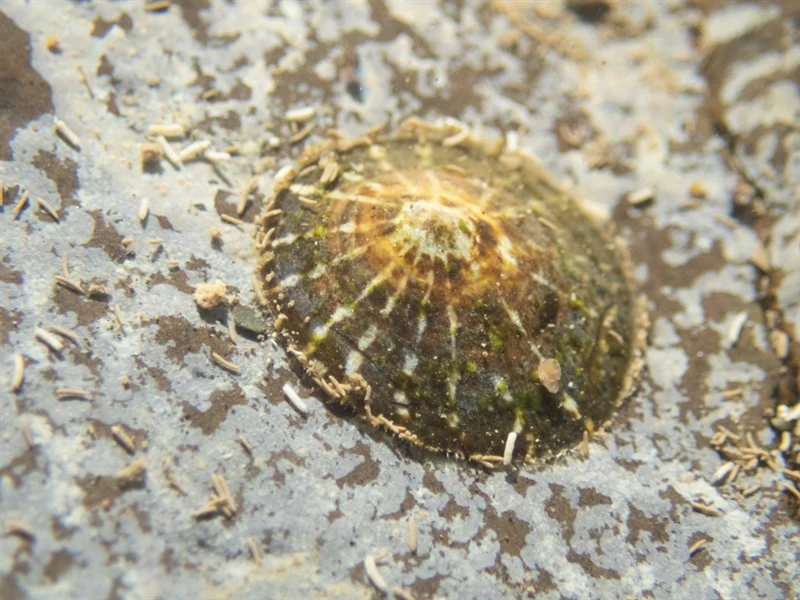Lottia filosa, commonly known as the “file limpet,” is a species of small, marine gastropod mollusk belonging to the family Lottiidae. It is a widespread and abundant limpet found along the rocky shores of the Pacific coast of North America.
Description & Characteristics
Lottia filosa is characterized by its conical, somewhat flattened shell, typically reaching a maximum size of about 25 millimeters in length. The shell is usually a grayish-brown color, often with dark brown or black markings. It has a distinct, slightly curved apex, and the surface of the shell is generally smooth, although it may exhibit fine radial ridges. The limpet’s foot, which is the muscular organ it uses for locomotion and attachment, is broad and flat, allowing it to firmly adhere to the rocky substrate.
Habitat and Occurrence
Lottia filosa is a common inhabitant of rocky intertidal zones along the Pacific coast of North America. It is typically found in the mid- to high-intertidal zone, where it is exposed to air and wave action during low tides. This species is well-adapted to the harsh conditions of the intertidal, including desiccation, temperature fluctuations, and predation. Lottia filosa is often found in large aggregations on rocky surfaces, where it can be observed clinging tightly to the substrate. It is also known to occur in tide pools, where it can benefit from the protection provided by the water. Lottia filosa is a significant component of the rocky intertidal ecosystem, playing a role in food webs and contributing to the overall biodiversity of the coastal environment.
Taxonomy
Lottia filosa is classified within the family Lottiidae, which belongs to the class Gastropoda. This class encompasses a vast array of marine, freshwater, and terrestrial snails and slugs. Gastropods exhibit a wide range of forms and adaptations, and they are characterized by their spiral shells (in most species) and their use of a muscular foot for locomotion.
Feeding
Lottia filosa is a grazer and primarily feeds on algae that grow on the surfaces of rocks. It uses its radula, a rasping tongue-like structure, to scrape algae off the substrate. Lottia filosa plays an important role in controlling the abundance of algae in the intertidal zone, contributing to the overall health and balance of the ecosystem.

Image References